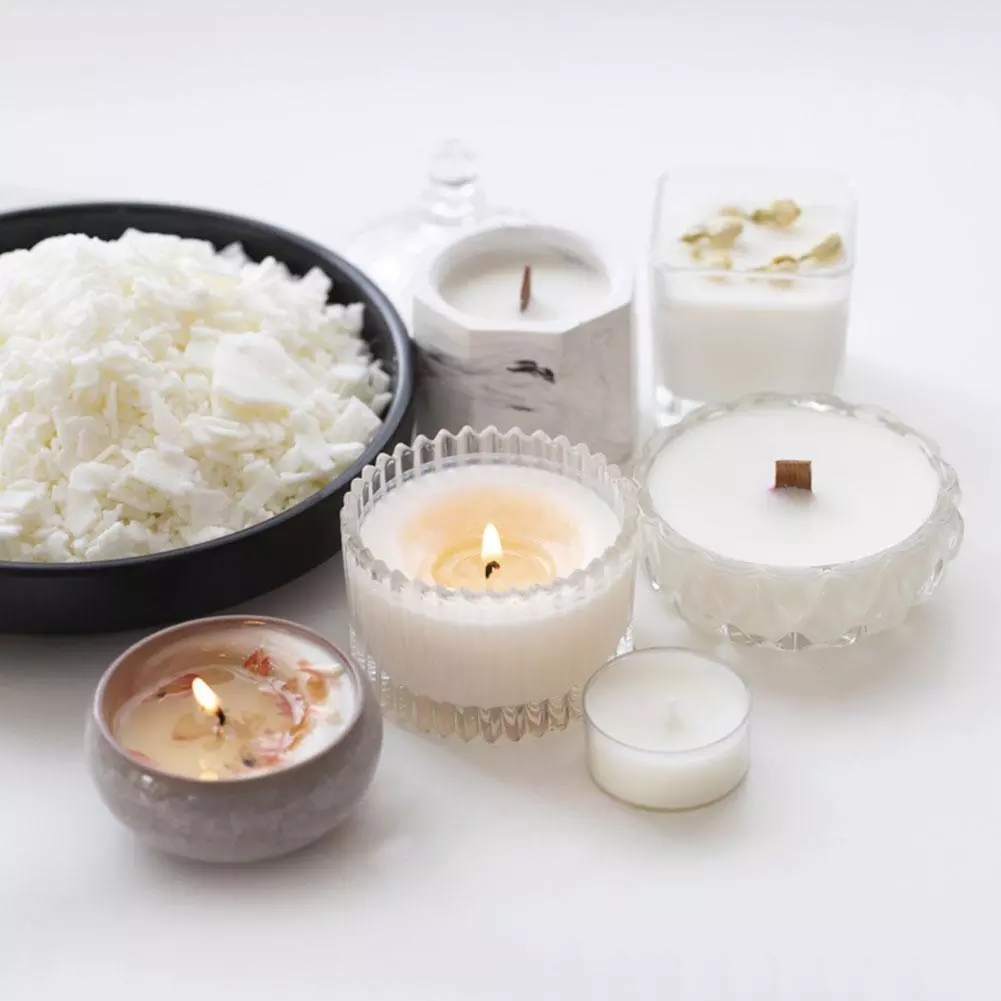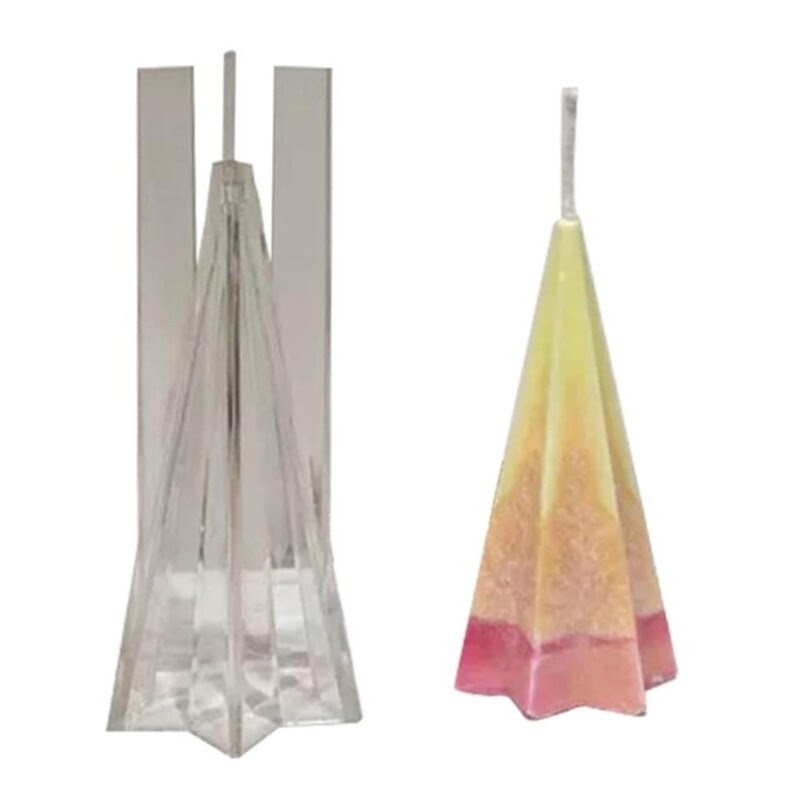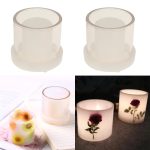Are you a candle maker looking for ways to improve the quality and durability of your candles? Look no further than the use of a candle making mold sealer. In this article, we will delve into the importance of using a mold sealer in candle making, the different types available, how to choose the right one for your project, and tips for achieving the best results.
When it comes to crafting beautiful and long-lasting candles, using a mold sealer is an essential step in the process. A mold sealer not only helps create a seamless finish on your candles but also prevents leakage and ensures that your candles retain their shape during the cooling process. Whether you are a beginner or an experienced candle maker, understanding the benefits of using a high-quality mold sealer can elevate your craft to new heights.
In the following sections, we will explore why using a mold sealer is crucial in candle making, the various types available in the market, and how to select the right one for your specific project. Additionally, we will provide you with a step-by-step guide on using a mold sealer, as well as useful tips and tricks for achieving outstanding results.
If you want to take your candle making skills to the next level and produce professional-quality candles, learning about mold sealers is an important first step.
The Importance of Using a Mold Sealer in Candle Making
Candle making mold sealers are an essential tool for any candle maker. These sealers help to ensure that the wax stays in place and doesn’t leak out of the mold during the cooling process. Without a mold sealer, you run the risk of having misshapen or flawed candles. In this section, we will discuss the importance of using a mold sealer in candle making and why it is necessary for achieving professional-looking results.
Benefits of Using a Mold Sealer
- Prevents wax leaks
- Perfectly shaped candles
- Smooth and polished finish
Using a mold sealer has several benefits that can greatly improve the quality of your candles. Firstly, it prevents any wax leaks from occurring during the cooling process. This ensures that your candles will maintain their intended shape and form, resulting in a professional-looking product. Additionally, using a mold sealer helps to achieve a smooth and polished finish on your candles, which is essential for creating high-quality products that customers will love.
Why Using a Mold Sealer Matters
- Prevent imperfections
- Avoid wasted materials
- Create marketable products
Using a mold sealer matters because it helps prevent imperfections in your candles. By ensuring that the wax stays within the mold, you can avoid wasted materials and reduce the need for remakes or touch-ups.
Ultimately, using a mold sealer allows you to create marketable products that meet industry standards for quality and appearance. Whether you are a hobbyist or a professional candle maker, using a mold sealer is essential for achieving consistent and desirable results in your candle making projects.
Types of Candle Making Mold Sealers
When it comes to candle making, using a mold sealer is crucial for achieving professional-looking and high-quality candles. There are various types of mold sealers available in the market, each with its own unique properties and benefits. Understanding the different types of mold sealers can help you choose the right one for your specific candle making project.
One common type of mold sealer used in candle making is silicone-based sealers. These sealers are known for their flexibility and durability, making them ideal for use with various types of candle molds. Silicone-based sealers provide a strong barrier between the mold and the wax, ensuring that the finished candles come out smoothly and without any imperfections.
Another type of mold sealer that is popular among candle makers is water-based sealers. These sealers are easy to use and can be applied directly to the inside of the mold using a brush or sponge. Water-based sealers are non-toxic and environmentally friendly, making them a great choice for those who prioritize sustainability in their candle making process.
Finally, there are also oil-based mold sealers, which create a slippery surface inside the mold that prevents the wax from sticking. Oil-based sealers are commonly used in combination with other types of sealers to achieve the desired results depending on the specific requirements of the candle making project.
Understanding the differences between these types of mold sealers can help you make an informed decision when choosing the right sealer for your candle making needs.
| Type | Properties |
|---|---|
| Silicone-based Sealers | Flexibility and durability |
| Water-based Sealers | Non-toxic and environmentally friendly |
| Oil-based Sealers | Create a slippery surface to prevent sticking |
How to Choose the Right Mold Sealer for Your Candle Making Project
When it comes to choosing the right mold sealer for your candle making project, there are a few factors to consider to ensure that you achieve the best results. With a wide variety of mold sealers available on the market, it’s important to understand the different types and their specific characteristics before making a decision.
Consider the Type of Wax
The type of wax you plan to use for your candles will play a significant role in selecting the appropriate mold sealer. For example, if you are using soy wax, which has a lower melting point compared to other waxes, you will need a mold sealer that can withstand heat and doesn’t easily melt or break down during the pouring process.
Assess Mold Material and Design
Another crucial factor to consider is the material and design of your candle molds. Different mold materials such as silicone, metal, or plastic may require specific types of sealers to ensure a proper release and finish. Additionally, if you are working with intricate or detailed molds, you’ll want a sealer that can reach into all the nooks and crannies without leaving any residue behind.
Read Customer Reviews and Recommendations
Before making a final decision on which mold sealer to use, it’s helpful to read customer reviews and seek recommendations from experienced candle makers. Learn from their experiences and take note of any particular brand or type of sealer that consistently receives positive feedback for its performance in various candle making applications.
By considering these essential factors when choosing a mold sealer for your candle making project, you can ensure that you select the right product to achieve professional-looking results every time.
Step-by-Step Guide on Using a Mold Sealer for Candle Making
Using a mold sealer is an essential step in the candle making process to ensure that your candles come out smooth and free from imperfections. The mold sealer helps create a barrier between the candle wax and the mold, preventing any leakage and ensuring a clean, professional finish. In this section, we will provide a step-by-step guide on how to properly use a mold sealer for your candle making projects.
First, carefully select the right type of mold sealer for your specific candle making project. There are different types of mold sealers available, including spray-on sealers, brush-on sealers, and liquid sealers. Consider the type of mold you are using and the material it is made from when choosing the appropriate sealer.
Before applying the mold sealer, ensure that your candle molds are clean and completely dry. Any moisture or residue left in the molds can compromise the effectiveness of the sealer. Once your molds are prepped and ready, apply a thin and even layer of the mold sealer to the interior surface of each mold. Be sure to cover every crevice and corner to create a complete barrier against leaking wax.
After applying the mold sealer, allow it to dry completely following the manufacturer’s instructions before pouring in your melted candle wax. Once your candles have set and are ready for removal from the molds, you should notice a significant difference in how easily they release from the molds with clean edges and surfaces.
| Types of Mold Sealers | How to Use Them |
|---|---|
| Spray-on Sealers | Simply spray an even coat inside each mold, let it dry. |
| Brush-on Sealers | Apply with a brush in even strokes across all surfaces. |
| Liquid Sealers | Pour into each mold, rotating it until all surfaces are coated. |
Tips and Tricks for Achieving the Best Results With Mold Sealers
When it comes to achieving the best results with mold sealers in candle making, there are a few tips and tricks that can make a significant difference in the outcome of your candles. First and foremost, it is essential to choose a high-quality mold sealer that is specifically designed for use in candle making.
Look for a product that is heat-resistant and non-toxic, as this will ensure that it effectively seals the mold without leaving any harmful residues on the finished candle.
Another helpful tip for achieving the best results with mold sealers is to apply the sealer evenly and generously to the interior of the mold. This will create a smooth and consistent surface for your candle to form against, resulting in a professional-looking final product. Take your time when applying the sealer, ensuring that every crevice and corner of the mold is adequately covered.
In addition to using a high-quality mold sealer and applying it generously, it’s also crucial to allow the sealer to dry completely before pouring your candle wax into the mold. This will prevent any moisture from becoming trapped between the sealer and the wax, which could affect the quality of your finished candle. Following these tips and tricks will help you achieve consistently excellent results when using a candle making mold sealer for your projects.
Common Mistakes to Avoid When Using Mold Sealers in Candle Making
When using a mold sealer in candle making, it is important to be aware of some common mistakes that can occur. Avoiding these mistakes will help ensure that the mold sealer effectively seals the mold and provides a smooth surface for your candle.
Not Cleaning the Mold Properly
One common mistake when using a mold sealer in candle making is not properly cleaning the mold before applying the sealer. Any residue or debris left in the mold can prevent the sealer from adhering properly, leading to an uneven or rough surface on your finished candle. To avoid this mistake, make sure to thoroughly clean and dry the mold before applying the sealer.
Applying Too Much or Too Little Sealer
Another common mistake is applying too much or too little sealer to the mold. Applying too much sealer can result in a thick, uneven layer that may affect the texture of your candle, while applying too little may not provide enough coverage to properly seal the mold. It’s important to follow the manufacturer’s instructions for the specific mold sealer you are using and apply it evenly and generously for best results.
Not Allowing Sufficient Drying Time
A common mistake many candle makers make when using a mold sealer is not allowing sufficient drying time before pouring their wax into the mold. Rushing this step can cause the sealer to mix with the wax and affect the overall appearance and quality of your candle. Be sure to allow the recommended drying time for the specific mold sealer you are using before proceeding with your candle making process.
By being aware of these common mistakes and taking steps to avoid them, you can ensure that your use of a mold sealer in candle making results in professional-looking, high-quality candles every time.
Alternatives to Mold Sealers for Candle Making
When it comes to candle making, using a mold sealer is an essential step in ensuring that your candles come out smooth and free from any imperfections. However, if you find yourself in a pinch without a candle making mold sealer, there are some alternatives that you can use to achieve similar results. Here are some alternative options to consider:
- Coconut Oil: Coconut oil can act as a great alternative to traditional mold sealers. Its natural properties allow it to create a barrier between the wax and the mold, preventing any leakage or seepage.
- Petroleum Jelly: This household staple can also be used as a mold sealer for candle making. Simply apply a thin layer of petroleum jelly to the interior of your mold before pouring in the wax to create a barrier.
- Silicone Spray: Another alternative option is silicone spray, which can be easily sprayed onto the interior of your mold to prevent any sticking and ensure easy release once the candle has set.
While these alternatives may not provide the exact same results as a dedicated candle making mold sealer, they can certainly do the trick in a pinch. It’s important to note that experimenting with different alternatives may require some trial and error to find the best solution for your specific candle making project.
It’s also worth mentioning that while these alternatives can work in certain situations, nothing beats the effectiveness of a high-quality candle making mold sealer designed specifically for this purpose. If you’re serious about achieving professional-looking candles without any imperfections, investing in a reliable mold sealer is highly recommended.
Conclusion
In conclusion, the use of a high-quality mold sealer in candle making is essential for achieving professional results. Mold sealers not only help in creating a smooth and even surface on the candles but also prevent any leakage or seepage during the cooling process. By using a mold sealer, you can ensure that your candles come out flawless and ready for presentation or sale.
Choosing the right mold sealer for your candle making project is crucial, as different types of waxes and molds may require specific sealers. It’s important to consider factors such as temperature resistance, flexibility, and ease of application when selecting a mold sealer. With the right product, you can streamline your candle making process and avoid potential issues such as air bubbles, cracking, or rough surfaces.
When using a mold sealer for candle making, it’s essential to follow the recommended application techniques and allow adequate drying or curing time. Additionally, paying attention to detail during the sealing process can make a significant difference in the final outcome of your candles. By incorporating these tips and tricks into your candle making routine, you can maximize the benefits of using a high-quality mold sealer and elevate the quality of your products.
Frequently Asked Questions
What Can I Use as a Candle Mold Sealer?
When making candles, you can use various materials as a mold sealer to prevent the wax from leaking. Some options include plumber’s putty, clay, hot glue, or even duct tape to seal any gaps and keep the wax contained.
What Is Mold Sealer for Candle Making?
Mold sealer for candle making is a substance used to seal the seams or edges of a candle mold to prevent any molten wax from leaking out during the pouring and cooling process. It helps ensure that the candle retains its desired shape and size.
How Do You Stop a Candle From Leaking Mold?
To stop a candle from leaking mold, it’s important to properly secure the mold before pouring the wax. Ensure that all seams and edges are tightly sealed with a suitable mold sealer, such as silicone putty or hot glue. Additionally, avoid overfilling the mold to prevent any overflow during cooling.

Welcome to my candle making blog! In this blog, I will be sharing my tips and tricks for making candles. I will also be sharing some of my favorite recipes.





